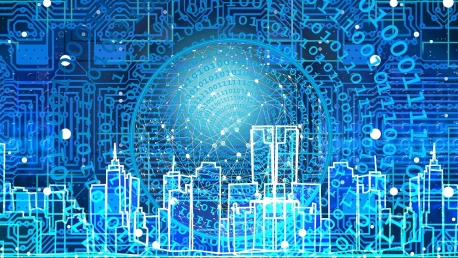As the United States hurtles towards a future with vastly more energy needs, a projected increase of nearly 5% over the next half-decade, the question of how best to meet this demand looms large. Coupled with this rise is the formidable challenge of modernizing the nation’s aging energy infrastructure to keep pace not only with the growing consumption but also with the integration of renewable energy sources. By 2050, renewables are expected to contribute 44% to the national power pool, adding complexity to an already intricate system. The critical status of the infrastructure is highlighted by the American Society of Civil Engineers’ 2021 power delivery networks grade of C-, painting a stark picture of the modernization that’s required.
AI-Driven Modernization at Argonne National Laboratory
Pioneering AI Software for Maintenance
At the forefront of meeting these modern challenges is the team at Argonne National Laboratory, who are turning to artificial intelligence as the linchpin for the future of energy. They’ve developed revolutionary AI software designed to monitor and interpret the wealth of sensor data now available across the energy grid. This technology aims to predict potential component failures before they occur, allowing for timely preemptive maintenance and thus steering clear of costly and inconvenient power outages. Transitioning from theoretical laboratory models to the crunching of real-world field data, this software has demonstrated its potential to cut operational costs dramatically. Energy providers benefit from fewer site visits, leading to increased profits and, crucially, a more resilient and reliable power supply.
Enhancing Decision-Making for Energy Companies
The boon of AI doesn’t stop at predictive maintenance—it extends to its decision-making capabilities. By employing these advanced predictive models, energy companies gain the ability to manage their equipment repair and replacement schedules with far greater efficiency. The AI technology equips providers with a robust toolkit for asset health management, leveling the playing field even for smaller operators and ensuring a degree of grid consistency that has been elusive until now. This pursuit of innovation indicates a broader movement within the industry; players at all levels are recognizing that the key to securing, optimizing, and future-proofing the US energy infrastructure lies in embracing cutting-edge technologies.
The Resolute Path Forward
Securing a Resilient Energy Infrastructure
Adopting these AI-driven tools is more than just a leap in technological prowess; it’s a strategic move toward safeguarding the very backbone that powers everyday American life. This infrastructure is not just a legacy of the past but a critical asset that requires careful management and strategic investment to support future generations. The predictive maintenance capabilities are set to revolutionize the way outages are handled, by preventing them before they have a chance to disrupt the lives of millions. Embracing this AI-led initiative is the nation’s bet on yielding a more secure, efficient, and reliable energy network that can satisfy an ever-increasing hunger for electricity.
Projecting the Benefits Nationwide
The U.S. is accelerating toward a future where energy requirements are expected to balloon by nearly 5% in the coming five years. This evolution poses a significant challenge: How do we adequately satisfy this increasing demand? This issue is further complicated by the urgent need to overhaul America’s dated energy infrastructure to accommodate not just the surge in energy use but also to incorporate an expanding share of renewable resources. By mid-century, renewable energy is set to make up 44% of America’s energy mix, further complicating an already complex grid. This urgent need for infrastructure advancement has been underscored by a worrying report from the American Society of Civil Engineers. In 2021, they gave a near-failing grade of C- to our power delivery networks, signaling a dire need for modernization to ensure reliability and efficiency in our energy future.









